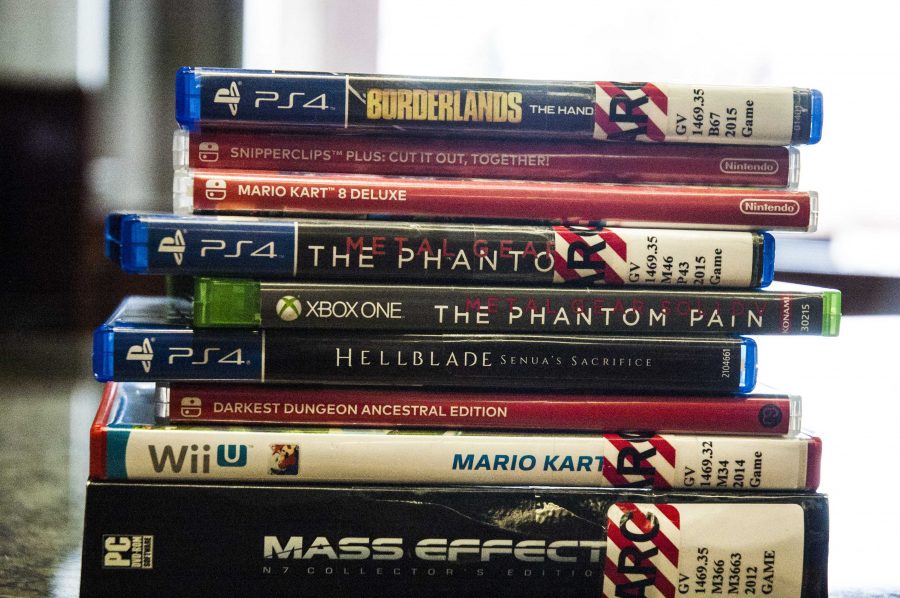The $70 Video Game is Becoming a Frightening Possibility
Video games at the library on April 3, 2010 in Salt Lake City, UT. (Photo by Matt Gubler | Daily Utah Chronicle)
July 18, 2020
It is no secret that there is a hard-set limit to how expensive video games can go. Ask any avid gamer — or even people who aren’t very familiar with games — how much a top-tier video game costs and they’ll all give you the same answer: $60. But what most people don’t know is that this price point is actually extremely outdated, and for a number of reasons.
In fact, the $60 game has been an industry standard for almost 20 years. Ever since the release of major video game consoles like Microsoft’s Xbox 360 and Sony’s Playstation 3, high-end AAA rating titles have cost $60. But anyone who knows how inflation works can simply run a few numbers and discover that such a number doesn’t hold over the span of 20 years and that games today should be priced almost twice as much: around $100 or $110. And if one looks further back to older gaming consoles and adjusts for inflation, they’d see games have been worth over $100 for a long time. But what gives?
Game companies have been afraid to move off of the $60 price point for a while. Industry leaders in the late-2000s who tried to adjust their prices above $60 for inflation were met with significant backlash that spelled disaster for new game releases. The $70 game is not a new topic in the games industry, but it has turned into a taboo one that companies don’t like to talk about despite the reality.
However, amidst the fast-ballooning costs of developing a game, companies have had to find some means to make up the deficit. This is where creative and questionable money-making methods come into play, like DLC (downloadable content), subscription services, season passes or microtransactions — the latter of which has been a hot controversy among the gaming world for a while. Even further down the rabbit hole of shady practices and you’ll run into loot boxes, which are an even hotter controversy and have been banned in some countries due to their similarities to gambling.
It seems, however, that the most successful methods of money-making come from the free-to-play plus microtransactions model as seen in major games like League of Legends, Apex Legends or Fortnite. These games provide a minimal entry cost, allowing anyone to download and play the game for free. This provides the largest possible amount of potential players (unless they started paying people to play their game), and the money comes from smaller microtransactions that buy players cool-looking aesthetics for their characters and other bonuses. And as such, these smaller purchases make players feel like they’re spending less, so they’ll be inclined to buy more. The beauty of these systems is that aesthetics and bonuses are largely low-effort compared to the alternative option of pumping out game releases, and in terms of effort to payout, they are incredibly successful.
These money-making methods are what is keeping the $60 standard afloat, which forces people to wonder if $70 price tags are necessary or even a good idea at all. $60 games already feel expensive and raising that bar even higher is risky business. Game company 2K has broken the ice with its newest installment, NBA 2K21, which has a $70 price tag, leading many people to question whether or not the change of standard is sound or flawed.
But even though no one likes seeing their favorite games jump in price, all we have is speculation at most, and only time will tell if the $70 game will become a reality or not.











